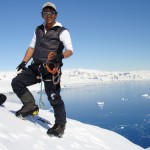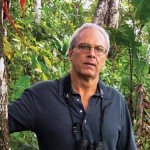The view from above
Up at the volcano observatory on the hill, we are awarded a spectacular view. The flat arc of the harbour and former town stretch out beneath us, a dust storm visible below Tavurvur. Inside the observatory, we find the eruption that destroyed Rabaul was not the catastrophic global rarity one would expect, considering the damage. “On a world scale, it was small,” explains Hawaii-trained volcanologist Ima Itikarai. The tragic truth is that, with proper planning, the town could have been saved. “The last really big [explosion] was 1400 years ago,” he adds. Before we leave the centre, the seimometers flicker wildly. “That’s an earthquake,” says Itikarai, springing into action. After it has been determined the earthquake is far away, probably underwater and poses no immediate threat, we leave the centre. Rabaul is a beautiful, haunting city, but it’s time to say goodbye.
Underwater wonderland
Across the island, the sleepy town of Kimbe Bay is waiting. At ground level, Kimbe is thick with lush jungles and giant, gnarled tree-trunks, leafy green vines and butterflies the size of my hand. Under the sea is a similar story. An ocean paradise of Nemo-like clownfish, pods of dolphins and turtles mill below the surface, all easily discovered with the aide of a snorkel and a mask. Less than an hour’s drive will take you to a caldera lake stuffed with freshwater crocodiles, and all around looms the peaked landscape of volcano country. It’s scenery ripe for child-like fantasies: pirates, castaways, island adventurers.
Kimbe Bay is no secret to divers, who flock here to spend weeks lurking far below the waterline. To everyone else, this is uncharted territory. More than once, the awed whisper trickles through our quiet camp: “I can’t
believe more people don’t know about this place”.
























